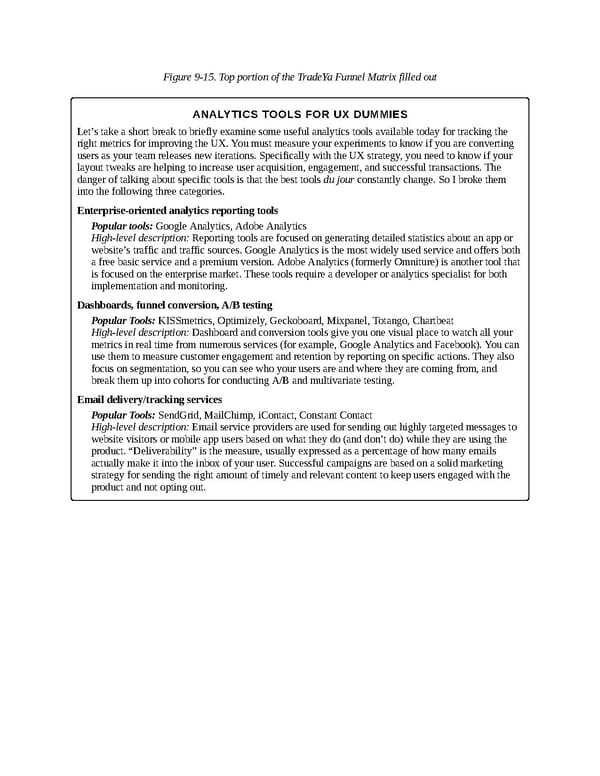Figure 9-15. Top portion of the TradeYa Funnel Matrix filled out ANALYTICS TOOLS FOR UX DUMMIES Let’s take a short break to briefly examine some useful analytics tools available today for tracking the right metrics for improving the UX. You must measure your experiments to know if you are converting users as your team releases new iterations. Specifically with the UX strategy, you need to know if your layout tweaks are helping to increase user acquisition, engagement, and successful transactions. The danger of talking about specific tools is that the best tools du jour constantly change. So I broke them into the following three categories. Enterprise-oriented analytics reporting tools Popular tools: Google Analytics, Adobe Analytics High-level description: Reporting tools are focused on generating detailed statistics about an app or website’s traffic and traffic sources. Google Analytics is the most widely used service and offers both a free basic service and a premium version. Adobe Analytics (formerly Omniture) is another tool that is focused on the enterprise market. These tools require a developer or analytics specialist for both implementation and monitoring. Dashboards, funnel conversion, A/B testing Popular Tools: KISSmetrics, Optimizely, Geckoboard, Mixpanel, Totango, Chartbeat High-level description: Dashboard and conversion tools give you one visual place to watch all your metrics in real time from numerous services (for example, Google Analytics and Facebook). You can use them to measure customer engagement and retention by reporting on specific actions. They also focus on segmentation, so you can see who your users are and where they are coming from, and break them up into cohorts for conducting A/B and multivariate testing. Email delivery/tracking services Popular Tools: SendGrid, MailChimp, iContact, Constant Contact High-level description: Email service providers are used for sending out highly targeted messages to website visitors or mobile app users based on what they do (and don’t do) while they are using the product. “Deliverability” is the measure, usually expressed as a percentage of how many emails actually make it into the inbox of your user. Successful campaigns are based on a solid marketing strategy for sending the right amount of timely and relevant content to keep users engaged with the product and not opting out.
 UX Strategy: How to Devise Innovative Digital Products that People Want Page 263 Page 265
UX Strategy: How to Devise Innovative Digital Products that People Want Page 263 Page 265